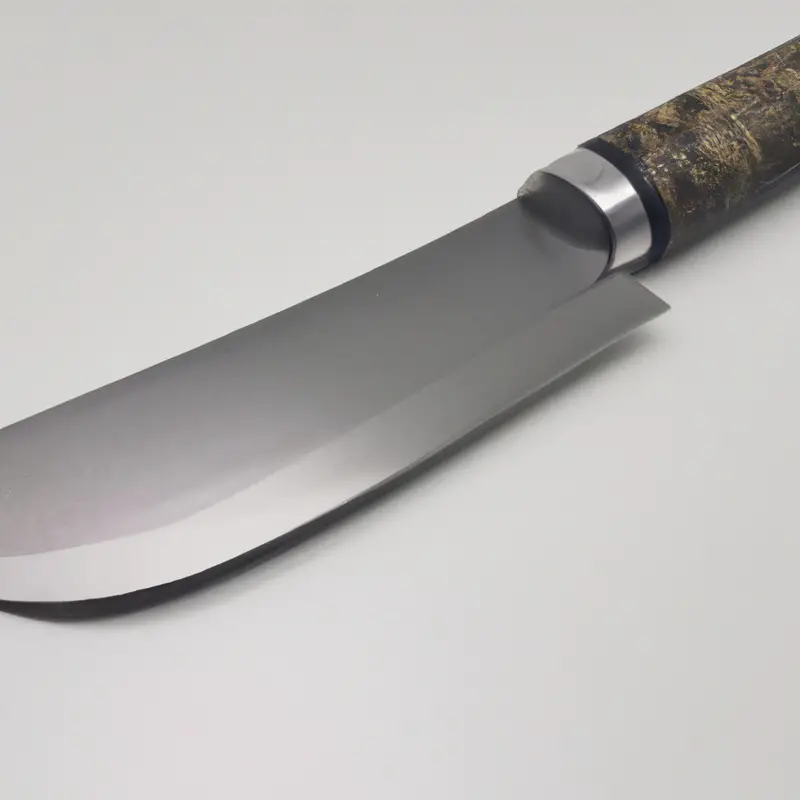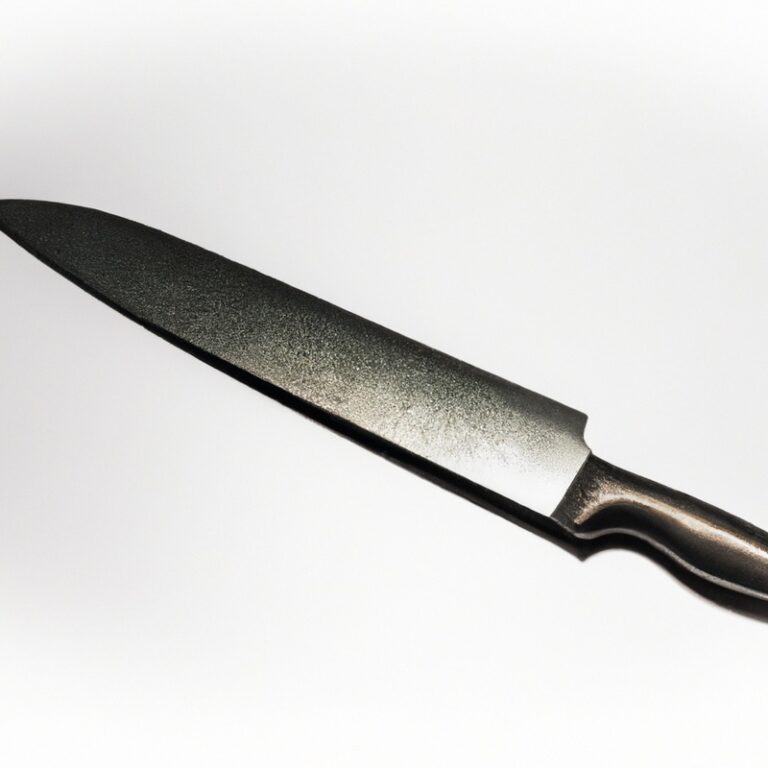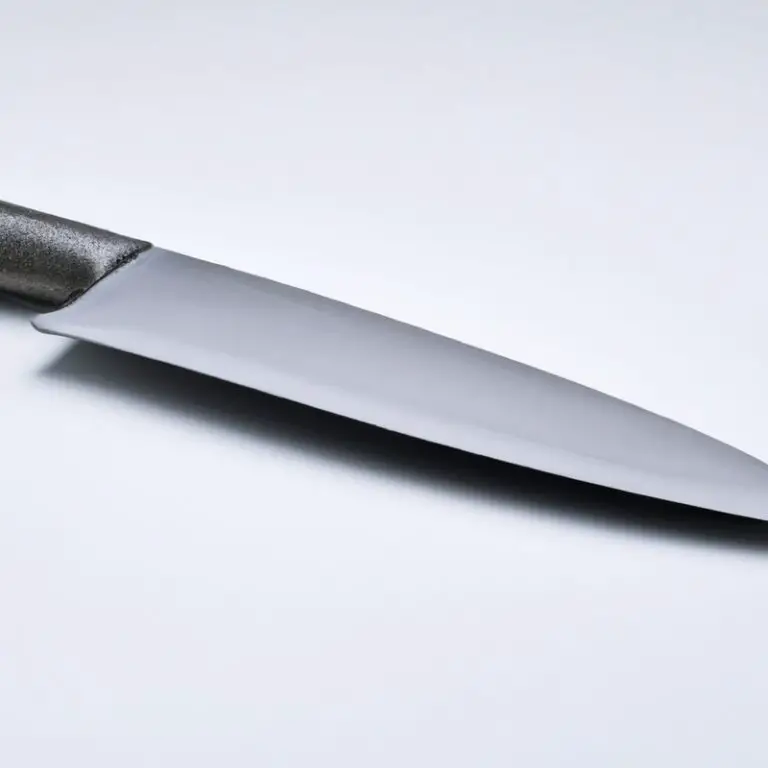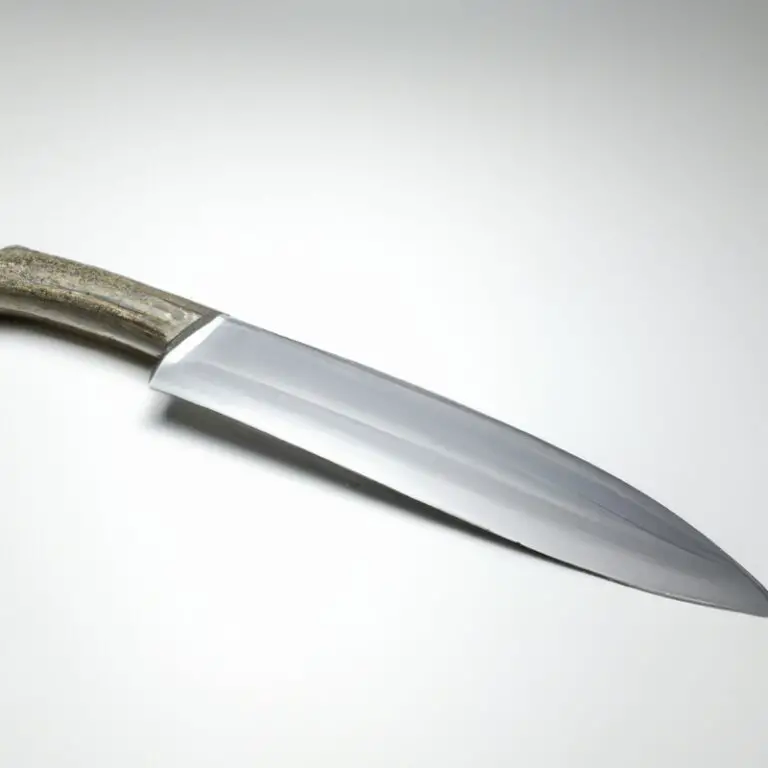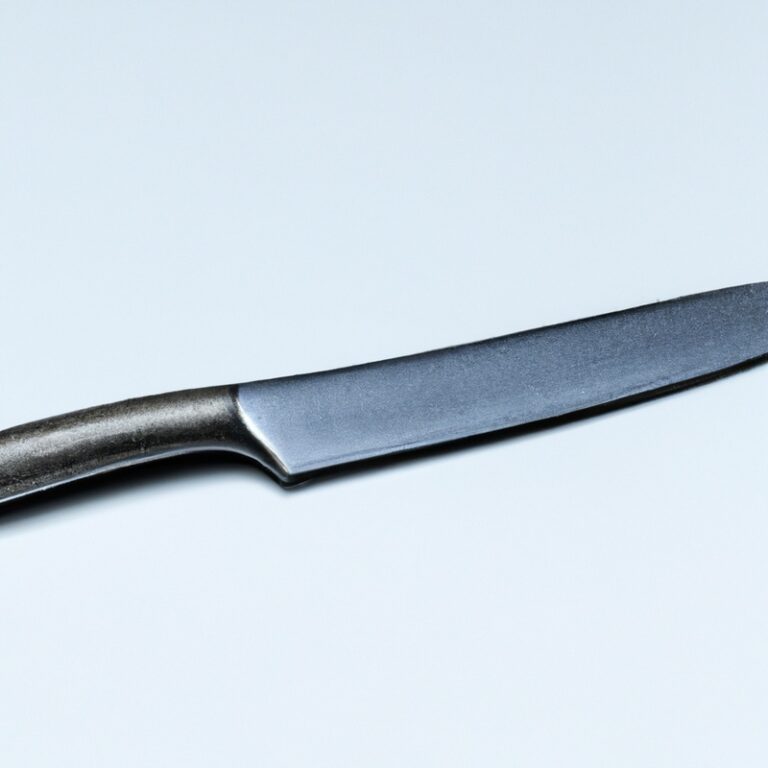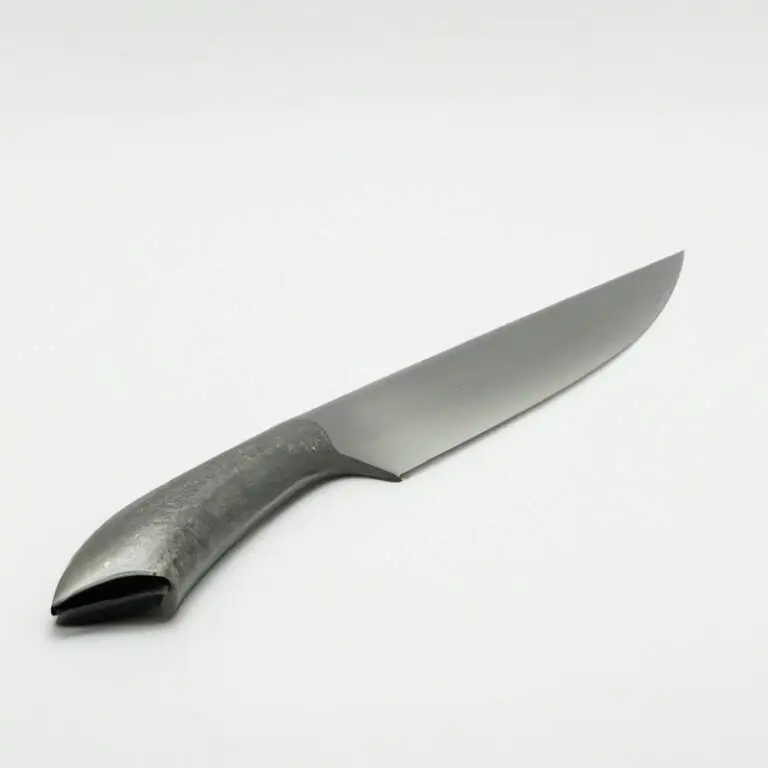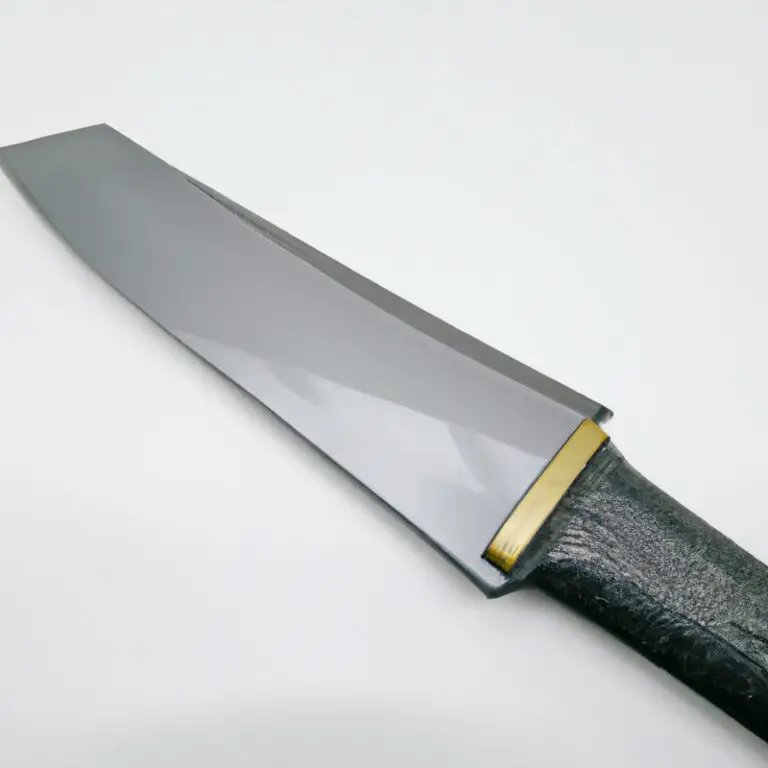What Are The Benefits Of Using a Gyuto Knife For Slicing Meat? Slice Like a Pro!
Key Takeaways:
- A Gyuto knife is a versatile tool that makes slicing meat easier and more efficient.
- The high-quality steel of a Gyuto knife allows for precise cuts and long-lasting sharpness.
- Proper maintenance of a Gyuto knife can extend its lifespan and improve its performance over time.
- Investing in a Gyuto knife can improve the quality of your meat dishes and make meal prep more enjoyable.
Are you tired of struggling to slice through meat with a dull and inefficient knife? Look no further than the Gyuto knife.
This Japanese-style knife offers a unique combination of sharpness and versatility, allowing for precise and effortless meat slicing.
From understanding its anatomy to choosing the right size and steel type, this article covers everything you need to know about the benefits of using a Gyuto knife. Say goodbye to uneven cuts and frustrating kitchen experiences with the help of this essential tool.
| Benefits of using a Gyuto Knife for Slicing Meat |
|---|
| 1. Versatility: The Gyuto knife can be used for slicing, chopping, and dicing, making it a versatile tool in any kitchen. |
| 2. Precision: Its sharp and narrow blade allows for precise cuts, making it perfect for slicing meat into thin, even portions. |
| 3. Comfort: The ergonomic handle of the Gyuto knife offers a comfortable grip, reducing hand fatigue and allowing for longer periods of use. |
| 4. Durability: Made with high-quality materials, the Gyuto knife is built to last and can withstand the demands of frequent use. |
| 5. Aesthetics: The sleek design of the Gyuto knife adds a touch of elegance to any kitchen and makes it a great choice for both professional chefs and home cooks. |
What is a Gyuto Knife and How is it Different from Other Knives?
A gyuto knife is a Japanese-style chef’s knife that is commonly used for slicing, dicing, and chopping. Unlike western-style chef’s knives, gyuto knives have thinner, sharper blades that are made to easily cut through meat and vegetables without the need for too much pressure.
One of the key differences between a gyuto knife and other knives is its blade angle.
While many Western-style knives have a blade angle of around 25 degrees, gyuto knives typically have a sharper angle of 15 degrees, making them more effective at slicing through food. Another distinguishing feature of a gyuto knife is its shape.
The blade of a gyuto knife is longer and narrower than that of a typical French or German chef’s knife.
This makes it more maneuverable and better suited for making precise cuts. Overall, a gyuto knife is a versatile and essential tool in any kitchen, particularly for those who frequently slice meat and vegetables.
Its unique design and sharp blade make it a top choice for chefs and home cooks alike.
The Anatomy of a Gyuto Knife: Understanding its Components
The anatomy of a Gyuto knife consists of the following components:
- Blade: The blade length of a Gyuto knife ranges from 7 to 12 inches and is made of high-quality steel. The blade is sharp, narrow, and slightly curved to provide maximum control and precision.
- Tang: The tang of the Gyuto knife refers to the metal part of the blade that extends into the handle. Full tang is preferred as it provides balance and durability.
- Bolster: The bolster is the thick metal band that separates the blade and handle. It provides stability and balance when cutting.
- Handle: The handle of a Gyuto knife can be made of various materials such as wood, synthetic, or metal. The size and shape of the handle can vary depending on the user’s preference.
Understanding the anatomy of a Gyuto knife is essential in selecting the ideal one for meat slicing. The combination of the blade’s length, steel quality, bolster, tang, and handle can significantly affect the user’s control, precision, and comfort when slicing meat.
How to Choose the Right Size for Your Gyuto Knife
When choosing the right size for a Gyuto knife, it’s essential to consider your personal preferences and the type of cutting tasks you’ll be performing. Gyuto knives typically range from 7 inches to 12 inches in length, with the most popular size being 8 or 9 inches.
A shorter blade is ideal for smaller tasks, such as slicing vegetables or deboning poultry.
On the other hand, a longer blade is better for larger tasks like slicing meat or filleting fish. It’s important to note that a longer blade may feel more cumbersome and less maneuverable for some individuals.
Therefore, it’s essential to consider the weight, balance, and grip of the knife when selecting the ideal size.
Overall, take into account the type of tasks you’ll be performing and your personal preferences when choosing the right size for your Gyuto knife.
The Advantages of Using a Gyuto Knife for Slicing Meat
One of the main advantages of using a Gyuto knife for slicing meat is its sharpness and versatility. The long, slim blade allows for precise cutting, creating clean slices without tearing or shredding the meat.
The sharpness of the blade also reduces the amount of force needed to slice through the meat, making the process quicker and more efficient.
Additionally, the thinness of the blade allows for more control over the slicing process, creating uniform cuts for even cooking. Overall, using a Gyuto knife for slicing meat can enhance the taste and presentation of your dishes while making the process more efficient and enjoyable.
Gyuto Knife Maintenance: How to Keep Your Knife Sharp
Gyuto knives require regular maintenance to maintain their sharpness and longevity. Here are some tips on how to take care of your Gyuto knife:
- Handwash your knife with warm water and mild soap, then thoroughly dry it after each use.
- Avoid using abrasive sponges or cleaners that can damage the blade’s finish.
- Store your knife in a designated knife block or sheath to protect the blade from damage.
- Regularly sharpen your knife using a sharpening stone or honing rod.
- Sharpen your knife at a 15-20 degree angle and use a consistent motion to avoid uneven sharpening.
- Prioritize safety and wear gloves while sharpening your knife to avoid getting cut.
- Avoid using your Gyuto knife on hard surfaces such as bone or frozen meat, as this can damage the blade’s edge.
By following these simple maintenance tips, you can keep your Gyuto knife in excellent condition for all your meat slicing needs.
The Different Types of Steel Used in Gyuto Knives
Gyuto knives are made from different types of steel, each with its unique properties. High-carbon stainless steel is the most common type of steel used in Gyuto knives.
It’s durable, corrosion-resistant, and holds an edge well.
VG-10 steel is another popular option. It’s a Japanese steel that’s harder and holds a sharper edge than high-carbon stainless steel.
Blue Steel and White Steel are other popular Japanese steel types used for Gyuto knives.
They’re known for their exceptional hardness, sharpness, and edge retention. However, they’re also prone to rust and require extra care and maintenance compared to other steel types.
When choosing a Gyuto knife, consider the type of steel used and its specific properties to select the best knife for your needs.
Using a Gyuto Knife: Essential Tips and Techniques
Using a Gyuto Knife: Essential Tips and Techniques
- Begin with the right grip – The blade of the Gyuto knife should be held with three fingers on the handle and the thumb and index finger on the blade. This grip allows for better control and precision.
- Use the full length of the blade – The long blade of the Gyuto knife allows for longer slices with fewer strokes, reducing the chance of damaging the meat or losing juiciness.
- Keep the blade sharp – A dull blade can cause uneven cuts, leading to the loss of flavor and texture. Sharpen the blade regularly to maintain performance.
- Use a proper cutting board – A soft and durable cutting board is recommended to avoid damaging the blade and maintaining edge retention.
- Cut against the grain – When slicing meat, always cut against the grain to ensure tenderness.
- Use a slicing motion – With the blade at a slight angle, use a back-and-forth slicing motion to create even slices.
- Let the knife do the work – With a sharp blade and proper technique, let the knife glide through the meat with minimal effort. Avoid applying excessive force or sawing motions, as this can damage the meat.
By following these essential tips and techniques, you can enhance your slicing skills with a Gyuto knife and enjoy the benefits of a high-quality blade.
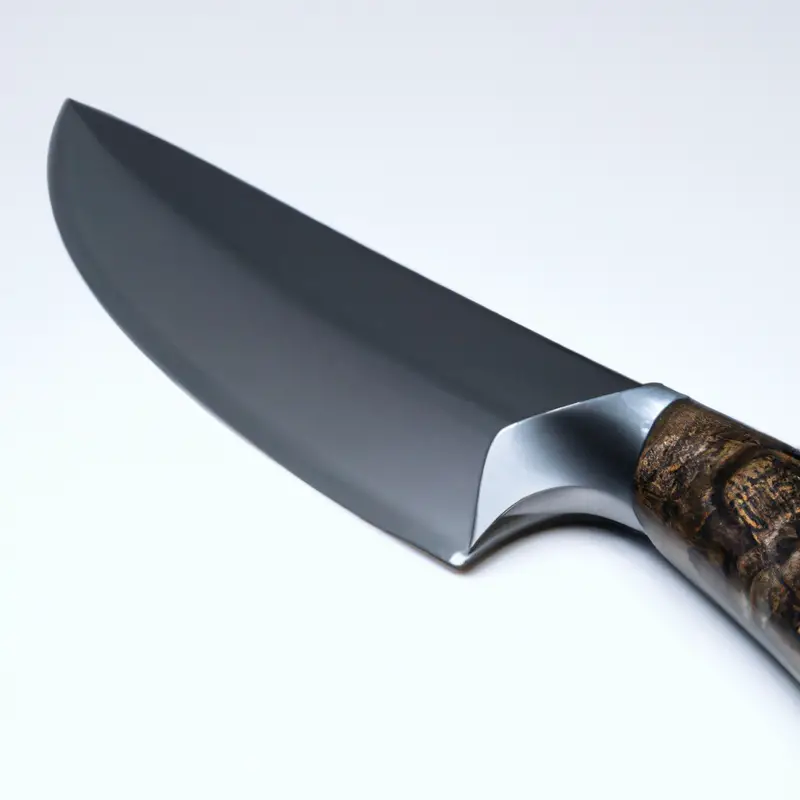
Safety Tips When Working with a Gyuto Knife
Safety should always be a top priority when working with a gyuto knife. Here are some essential tips to keep in mind:
- Hold the knife with a secure grip and keep your fingers away from the blade.
- Cut on a stable surface and ensure that the knife and cutting board are both dry.
- Pay attention to the angle of the blade and the direction of your cuts. Avoid slicing towards your body.
- Learn the proper technique for sharpening and honing your knife to ensure a clean cut.
- When not in use, store your gyuto knife in a safe place, away from children and pets.
By following these safety tips, you can use your gyuto knife safely and confidently for all your meat slicing needs.
How a High-Quality Gyuto Knife Can Enhance Your Slicing Experience
A high-quality Gyuto knife can greatly enhance your slicing experience by providing a sharp, precise cut every time. With its thin, sharp blade and ergonomic handle, a Gyuto knife allows for greater control and reduces hand fatigue.
Additionally, its versatility makes it a great choice for slicing meat of all kinds, from beef to poultry and even fish.
Investing in a quality Gyuto knife can elevate your cooking game and make preparing meals much more efficient and enjoyable.
Popular Meat Slicing Techniques Using a Gyuto Knife
When it comes to slicing meat with a Gyuto knife, there are a few popular techniques that can enhance the results. These include the following:
- The Draw Cut: With this technique, you pull the knife towards you while keeping the blade steady. This allows for clean and precise cuts.
- The Push Cut: This technique involves pushing the knife forward while keeping the blade in contact with the meat. This is particularly useful for softer meats like fish and poultry.
- The Rocking Motion: By using a slight rocking motion, you can slice through tougher meats like beef or pork. Start at the base of the blade near the handle and rock the knife towards the tip.
- The Pull-through Cut: For larger pieces of meat, you can start by making a small cut and then pull the knife through the meat, allowing the blade to do most of the work.
By mastering these techniques, you can achieve consistent and professional-grade slices with your Gyuto knife.
The Pros and Cons of Using a Gyuto Knife over Other Knives for Meat Slicing
Using a Gyuto knife for meat slicing has its advantages and disadvantages compared to other knives. Here are some of the pros and cons: Pros:
- Gyuto knives are thinner and sharper, allowing for cleaner cuts and less effort in slicing meat.
- Their longer blade makes it possible to slice larger cuts of meat in one motion without the need for a sawing motion.
- Their versatile nature makes them suitable for various tasks in the kitchen, including slicing, chopping, and dicing.
Cons:
- Gyuto knives require more maintenance and sharpening than other knives due to their thin and sharp nature.
- They may not be suitable for heavy-duty tasks such as chopping bones or dense vegetables.
- They are more expensive than other knives on the market, making them less accessible to some individuals.
Overall, using a Gyuto knife for meat slicing is an excellent choice for those looking for precision and efficiency. However, it may not be the best fit for every kitchen task or budget.
How to Choose a Gyuto Knife That Suits Your Comfort and Grip
Choosing a Gyuto knife that suits your comfort and grip is crucial for a comfortable and effortless meat-slicing experience. Here are some factors to consider when selecting a Gyuto knife:
- Blade size: The blade size should match the size of meat you will be slicing. Small blades work well for delicate tasks like slicing fish, while large blades are better suited for larger cuts of meat.
- Blade material: The quality of the blade material impacts the sharpness and durability of the knife. High-carbon steel and Damascus steel are two popular options.
- Handle material: The handle should be made from non-slip materials that offer a comfortable grip. Popular options include wood, plastic, and composite materials.
- Weight: The weight of the knife can impact your comfort level during prolonged use. A lighter knife may be more comfortable for some individuals, while others may prefer a heavier knife for more control.
- Balance: A well-balanced knife offers better control and reduces the risk of injury. Hold the knife to see if it feels balanced in your hand.
Overall, it’s essential to choose a Gyuto knife that feels comfortable in your hand and suits your individual needs. Consider your grip, size, and other factors to ensure you select the best option for your meat slicing needs.
Exploring the History and Cultural Significance of Gyuto Knives
Gyuto knives originated in Japan in the 19th century and were primarily used by professional chefs in the Osaka region. The name “Gyuto” means “cow sword” and refers to its original purpose for slicing, carving, and butchering beef.
In the present day, Gyuto knives have become popular worldwide and are used by home cooks and chefs alike for various meat slicing tasks.
The cultural significance of Gyuto knives can be traced back to traditional Japanese sword-making techniques, where the focus is on achieving a sharp, durable, and balanced blade. The forging process involves multiple layers of steel, resulting in a distinctive pattern on the blade’s surface known as Damascus.
This technique not only adds to the knife’s aesthetic appeal but also enhances its durability and edge retention properties.
Gyuto knives are an essential aspect of Japanese culinary culture and have remained an indispensable tool in professional kitchens and households alike. The blade’s curved shape and sharp profile allow for precision cuts and seamless slicing of meats and vegetables.
Combining centuries-old craftsmanship techniques with the modern demand for functionality and practicality, Gyuto knives have earned their place as one of the best choices for meat slicing tasks.
Combining Western and Eastern Knives: Pros and Cons of Using a Gyuto Knife in a Western Kitchen
When it comes to using a Gyuto knife in a Western kitchen, there are several pros and cons to consider. One benefit of using a Gyuto knife is its versatile and sharp blade, which makes it perfect for slicing meat and other foods.
Additionally, the Japanese-style design of the knife allows for precision and control while cutting.
There are, however, some potential downsides to using a Gyuto knife in a Western kitchen. The lightweight and thin blade may not be suitable for certain tasks, such as chopping through thick bones.
Additionally, the Japanese-style handle may not be as comfortable for those accustomed to Western-style handles.
Ultimately, the decision to use a Gyuto knife in a Western kitchen comes down to personal preference and the specific tasks at hand. Those who prioritize precision and versatility may find the Gyuto knife to be a valuable addition to their kitchen, while others may prefer to stick with traditional Western-style knives.
Gyuto Knives vs. Chef Knives: What are the Differences and Similarities?
Gyuto knives and chef knives are both versatile tools used in the kitchen, but there are some key differences and similarities between them. Differences:
- Gyuto knives are typically thinner and lighter than chef knives, making them more agile for tasks like slicing meat and vegetables.
- The blade of a Gyuto knife is sharper than that of a chef knife, with a sharper angle for better precision.
- The pointed tip of a Gyuto knife allows for more intricate cuts, while a chef knife’s rounded tip is safer for other tasks like chopping herbs.
Similarities:
- Both knives have a Western-style handle for a comfortable grip.
- They are both made from high-quality steel, although the type of steel used may vary.
- Both knives are multipurpose, capable of handling various kitchen tasks like chopping, slicing, and dicing.
Ultimately, the choice between a Gyuto knife and a chef knife depends on personal preference and the specific use case. Gyuto knives may be preferred for meat slicing and intricate cutting, while chef knives may be better suited for general kitchen tasks like chopping and dicing.
Cutting Meat with Ease: Techniques for Beginners with a Gyuto Knife
To cut meat with ease using a Gyuto knife, beginners should follow some essential techniques. Firstly, ensure the knife is sharp to get clean cuts.
Secondly, make sure the meat is stabilized on the cutting board by placing a damp towel underneath it.
Thirdly, use the tip of the knife to start the cut and glide it along the meat while keeping the blade perpendicular to the cutting board. Finally, use a rocking motion to separate the meat from the bone and slice it with short strokes.
By following these techniques, beginners can slice meat with ease using a Gyuto knife.
The Versatility of Gyuto Knives: Other Foods That Can Be Cut with a Gyuto Knife
Apart from slicing meat, a gyuto knife is versatile enough to cut a variety of foods. With its long, narrow blade and sharp edge, a gyuto knife is perfect for slicing vegetables, fruits, and cheese.
It can also be used for precision tasks such as deveining shrimp, scoring fish, and trimming the fat from meat.
The thin blade of a gyuto knife makes it perfect for slicing through delicate slices of sashimi or sushi too. The knife’s balance and weight distribution also make it easier to control when slicing through a variety of ingredients.
Overall, a gyuto knife can be a valuable tool in any kitchen, not just for meat slicing but also for a wide range of other food prep tasks.
Top Gyuto Knife Brands and Their Unique Features
There are several top gyuto knife brands in the market that offer unique features to enhance the slicing experience. Here are some of the best gyuto knife brands and their exceptional qualities:
- Shun – Known for its precision cutting and sharp edges, Shun offers gyuto knives with layered Damascus steel blades, ergonomic handles and unique hammered finish to prevent food from sticking to the blade.
- Miyabi – Miyabi offers gyuto knives with a unique blade design that ensures maximum sharpness and edge retention. These knives are also designed with a durable handle for a comfortable grip.
- Global – Global gyuto knives are created with a thin and sharp blade for improved precision in slicing. This brand also offers a weighted handle for balanced handling.
- Wusthof – Wusthof produces top-quality gyuto knives that are sharpened to perfection for effortless slicing. Their knives also have a comfortable handle for extended use and precision tang for balance.
- Mercer – Mercer’s gyuto knives are highly durable and versatile. These knives offer a razor-sharp blade, ergonomic handle, and a protective finger guard.
In summary, each brand prides itself on providing high-quality gyuto knives that offer unique features such as precision cutting, sharpness, edge retention, and comfortable grip, among others. Choose a brand that best suits your needs and preferences to enhance your slicing experience.
Sharpening a Gyuto Knife: Best Practices and Techniques
Sharpening a Gyuto knife is essential to ensure that it performs exceptionally well when slicing meat. Here are some best practices and techniques for sharpening your Gyuto knife:
- Use a whetstone: A whetstone is the most common tool for sharpening a Gyuto knife. It comes in different grits, and a coarse grit is suitable for repairing damaged or dull edges, while a fine grit is ideal for honing sharp edges.
- Maintain a constant angle: Maintaining a constant angle when sharpening your knife helps to achieve a fine edge. A suitable angle for sharpening a Gyuto knife is between 15 to 20 degrees.
- Lubricate the whetstone: Lubricate your whetstone with water or oil to prevent metal particles from clogging the stone, which can damage your blade.
- Be patient: Sharpening a Gyuto knife takes time, and it should not be rushed. Take your time and make smooth, steady strokes across the stone, paying particular attention to the edge.
- Test the sharpness: Once you are finished sharpening, you can check the sharpness by slicing through a piece of paper or tomato. If it cuts effortlessly, then the blade is sharp.
In summary, sharpening a Gyuto knife is vital for optimal performance when slicing meat. Using a whetstone, maintaining a constant angle, lubricating the stone, being patient, and testing sharpness are some best practices and techniques to follow when sharpening your Gyuto knife.
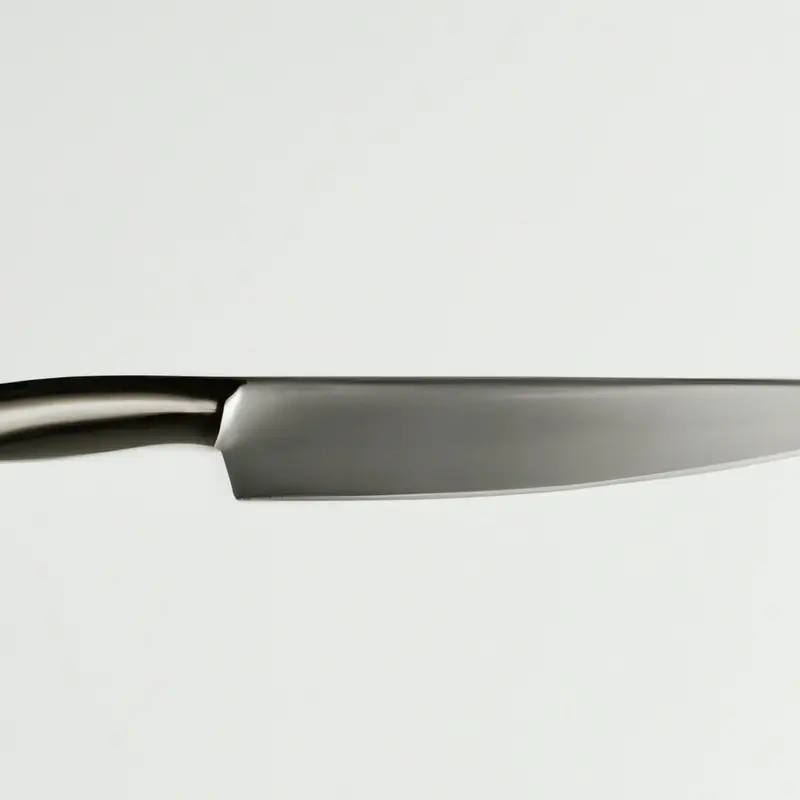
Common Mistakes to Avoid When Using a Gyuto Knife for Meat Slicing
To get the best results when using a Gyuto knife for meat slicing, there are common mistakes to avoid. They are:
- Improper Technique: Slicing meat with a Gyuto knife requires proper technique. Avoid applying too much pressure or sawing back and forth motions as these may result in uneven cuts.
- Dull Blade: A dull blade results in ragged and uneven slices. You need to sharpen your Gyuto knife regularly to ensure a sharp edge.
- Cutting Bones: Gyuto knives are not designed to cut through bones. Avoid using them for tasks like trimming meat or cutting bone-in meat.
- Incorrect Grip: The Gyuto knife is designed with a unique handle so that it can fit securely in your hand. Ensure you have a firm grip to prevent the knife from slipping and causing accidents.
- Poor Maintenance: Failing to care for your Gyuto knife will cause it to become dull and difficult to use. Avoid washing it in dishwashers or leaving it wet after use.
By avoiding these common mistakes, you can optimize the performance of your Gyuto knife, ensuring a more enjoyable and effective meat slicing experience.
Final Verdict
The Gyuto knife is an exceptional tool for slicing meat due to its sharpness, durability, and versatility. Its unique design and components make it stand out from other knives, providing an unparalleled slicing experience.
By choosing the right size, steel, and grip, you can enhance your meat slicing skills and elevate your culinary creations.
By maintaining its sharpness and following safety protocols, you can prolong its lifespan and ensure a safe slicing experience. Trustworthy brands such as Shun, Global, and Wusthof offer top-quality Gyuto knives with unique features to suit your preferences.
Ultimately, investing in a Gyuto knife is an investment in your culinary journey, allowing you to cut meat with ease and precision while expanding your cooking repertoire.
So, don’t hesitate to explore the world of Gyuto knives and take your meat slicing skills to the next level.

